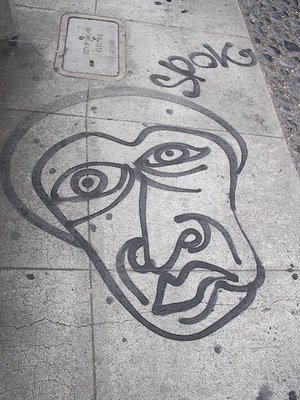Ορυκτοί Γλώσσα*

So you are saying that human agreement decides what is true and what is false? It is what human beings say that is true and false; and they agree in the language they use. That is not agreement in opinions but in forms of life.
Probably the best place to begin our discussion of the Earth’s biogeography is to answer the following question. What is life? While the reply to this question may appear simple, scientists have actually spent considerable time pondering this problem. In fact, many scientists would suggest that we still do not have a clear definitive answer to this question. Part of this problem is related to the existence of viruses and other forms of microscopic things. Some scientists define viruses as very complex organic molecules, while others suggest they are the simplest form of life.
In a recent issue of the journal Science (March 22, 2002), molecular biologist Daniel E. Koshland Jr. was asked to write a special essay where he would set out to define life. In this article, he suggested that something could be considered “alive” if it meets the following seven conditions.
(1). Living things must have a program to make copies of themselves from generation to generation. This program would describe both the parts that make up the organisms and the processes that occur between the various parts. These processes are of course the metabolic reactions that take place in a living thing allowing it to function over time. In most living systems, the program of life is encoded in DNA.
(2). Life adapts and evolves in step with external changes in the environment. This process is directly connected to life’s program through mutation and natural selection. This condition allows life-forms to be optimized for gradual changes in the environment.
(3). Organisms tend to be complex, highly organized, and most importantly have compartmentalized structures. Chemicals found within their bodies are synthesized through metabolic processes into structures that have specific purposes. Cells and their various organelles are examples of such structures. Cells are also the basic functioning unit of life. In multi-cellular organisms, cells are often organized into organs to create higher levels of complexity and function.
(4). Living things have the ability to take energy from their environment and change it from one form to another. This energy is usually used to facilitate their growth and reproduction. We call the process that allows for this facilitation metabolism.
(5). Organisms have regeneration systems that replace parts of themselves that are subject to wear and tear. This regeneration can be partial or it can involve the complete replacement of the organism. Complete replacement is necessary because partial replacements cannot stop the unavoidable decline in the functioning state of the entire living system over time. In other words, all organisms degrade into a final non-functioning state we call death.
(6). Living creatures respond to environmental stimuli through feedback mechanisms. Cues from the environment can cause organisms to react through behavior, metabolism, and physiological change. Further, responses to stimuli generally act to increase a creature’s chance for day-to-day survival.
(7). Organisms are able to maintain numerous metabolic reactions even in a single instance in time. Living things also keep each of these reactions separated from each other.
Our mistake is to look for an explanation where we ought to look at what happens as a "proto-phenomenon". That is where we ought to have said: this language-game is played. What has to be accepted, the given is, so one could say, forms of life.
The creation principle developed five essential elements, or building blocks, that all life forms contain: ether, air, fire, water, and earth. We can easily see how life was created from the subtlest to the grossest matter. From eternity, the subtlest form of matter is ether. Ether mixing with eternity creates air, a more observable or experiential element. As air moves, it eventually creates friction, which creates heat or fire. Heat produces moisture, thus creating water, the densest element yet: if one tries to walk through water, one is slowed by its density. Finally, water produces the densest form of matter, earth. The Vedas say that all the creation, including humans, is made up of combinations of all five essential elements. These elements are the subtlest aspects of human life, finer than the molecular, atomic, or subatomic levels.One can imagine an animal angry, frightened, unhappy, happy, startled. But hopeful? And why not? A dog believes his master is at the door. But can he also believe his master will come the day after tomorrow? And what can he not do here? How do I do it? How am I supposed to answer this? Can only those hope who can talk? Only those who have mastered the use of language? That is to say, the phaenomena of hope are modes of this complicated form of life.
Elemental, my dear Watson.
*Mineral Language


1 Comments:
...please where can I buy a unicorn?
Post a Comment
<< Home